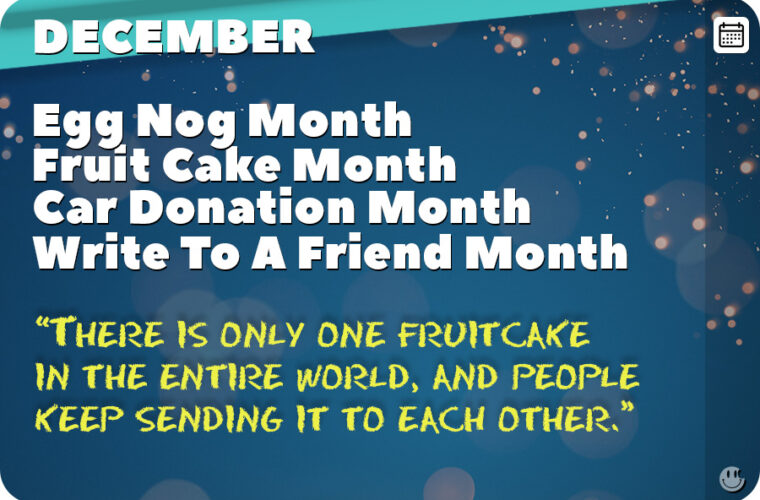
|
James Bond Films |
Based on the Ian Fleming novels, the James Bond film series is a hallmark of espionage cinema, known for its iconic characters and thrilling adventures. The series started in 1962 with Dr. No, introducing Sean Connery as the suave and sophisticated spy James Bond. Connery’s portrayal set the standard for Bond’s character: a blend of charm, intelligence, and lethal efficiency. Primary Characters in James Bond FilmsJames Bond himself has been portrayed by several actors over the decades, each bringing their own flair to the role. After Sean Connery, George Lazenby took a brief turn in On Her Majesty’s Secret Service (1969), followed by Roger Moore, who played Bond with a more humorous and light-hearted tone through the 1970s and early 1980s. Timothy Dalton brought a grittier and more serious Bond in the late 1980s. In the 1990s, Pierce Brosnan reintroduced Bond with a balance of charisma and cold determination, aligning with the digital age. Daniel Craig took over in 2006 with Casino Royale, portraying a raw, emotional, and physically imposing Bond, a significant shift from his predecessors. Each actor’s interpretation showed different facets of Bond’s complex personality. Significant Secondary CharactersThe longevity of the James Bond series is not only due to the appeal of its primary character but also to its memorable secondary characters:
Bond Villains and Evil Organizations: Key Adversaries in the 007 SagaThe James Bond series is defined as much by its charismatic protagonist as by its compelling villains and sinister organizations. These adversaries challenge Bond and add depth and excitement to the narratives. Iconic Bond VillainsErnst Stavro Blofeld, perhaps the most notorious of all Bond villains, stands out as James Bond’s arch-nemesis across multiple films. Characterized by his bald head, facial scar, and penchant for stroking a white cat, Blofeld is the global criminal organization SPECTRE leader. His plots typically involve grandiose schemes for world domination or massive economic disruption. Portrayed by several actors, including Donald Pleasence and Christoph Waltz, Blofeld’s menacing presence and intellectual battle with Bond make him a quintessential villain. Auric Goldfinger from Goldfinger (1964) is another memorable villain. He is famous for his greed for gold and his plan to contaminate Fort Knox’s United States Bullion Depository. Goldfinger’s distinctiveness lies in his resourcefulness and the iconic line, “No, Mr. Bond, I expect you to die,” which he delivers during one of the most memorable torture scenes in cinematic history. Le Chiffre, featured in Casino Royale (2006), is a financier of terrorism with a chilling calmness and a knack for poker. His strategic mind and high-stakes gambling with Bond make their confrontations thrilling and intellectually engaging. Evil OrganizationsSPECTRE (Special Executive for Counterintelligence, Terrorism, Revenge, and Extortion) is the most infamous organization in the Bond universe. Featured in several films, SPECTRE’s objectives revolve around global disruption and profiting from the ensuing chaos. The organization is structured like a corporation but with loyalty enforced through fear, making it a persistent threat to international security. Quantum, introduced in the Daniel Craig era as a contemporary equivalent of SPECTRE, is another shadowy organization. Its members are influential individuals who manipulate world events for their own gain. In Quantum of Solace (2008), they are depicted as orchestrating a coup in Bolivia to monopolize freshwater resources. Impact of Villains and OrganizationsThe villains and their organizations significantly shape the narrative and thematic structure of the James Bond series. They introduce high stakes and moral complexities, pushing Bond to his limits and often forcing him to confront his own values and decisions. Moreover, these villains reflect societal fears and anxieties at each movie’s release, evolving from Cold War concerns to global terrorism and economic manipulation. Bond Girls: Iconic Characters and the Actresses Who Played Them“Bond girls” are vital to the charm and appeal of the James Bond series. These characters range from allies and love interests to villains, each bringing a unique dynamic to the story. Here is a list of some of the most memorable Bond girls and the talented actresses who portrayed them:
|
Two Dozen Facts and Trivia About James Bond and His Cohorts
|
Six actors have officially played the role of James Bond in the film series produced by EON Productions.Sean Connery (1962–1967, 1971, 1983): Scottish actor Sean Connery was the first to portray James Bond, starting with Dr. No in 1962. He defined Bond’s suave and charismatic nature, appearing in five consecutive films before initially stepping down after You Only Live Twice (1967). Connery returned for Diamonds Are Forever (1971) and later in the non-EON-produced Never Say Never Again (1983). George Lazenby (1969): George Lazenby, an Australian model, played Bond in just one film, On Her Majesty’s Secret Service (1969). His performance is often noted for its vulnerability and depth, especially as Bond experiences personal loss. Roger Moore (1973–1985): Roger Moore played Bond in seven films, starting with Live and Let Die (1973) and ending with A View to a Kill (1985). Moore’s portrayal was humorous and lighthearted, matching the 1970s and early 1980s sensibilities. Timothy Dalton (1987–1989): Timothy Dalton’s two films, The Living Daylights (1987) and Licence to Kill (1989), brought a darker and more serious tone to the role. His interpretation was closer to Fleming’s original vision of the character as a brooding, complex figure. Pierce Brosnan (1995–2002): Pierce Brosnan rejuvenated the franchise in the post-Cold War era, beginning with GoldenEye (1995). Brosnan’s Bond was polished, charming, and equipped with high-tech gadgets, starring in four films until Die Another Day (2002). Daniel Craig (2006–2021): Daniel Craig took over the role with Casino Royale (2006), bringing an intense physicality and emotional depth to Bond. His portrayal showed Bond’s origins and personal growth over five films, concluding with No Time to Die (2021). |
List of James Bond Films |
| Dr. No (1962) US release date: October 5, 1962. Gross: $59.6 million. Starring: Sean Connery, Ursula Andress, Joseph Wiseman. Plot: James Bond is sent to Jamaica to investigate the disappearance of a fellow agent and uncovers a sinister plot involving a megalomaniacal villain named Dr. No. |
| From Russia with Love (1964) US release date: April 8, 1964. Gross: $78.9 million. Starring: Sean Connery, Daniela Bianchi, Pedro Armendáriz. Plot: James Bond is sent to Istanbul to retrieve a Soviet decoding machine but falls for a beautiful Russian spy and becomes the target of a deadly assassination plot. |
| Goldfinger (1964) US release date: September 18, 1964. Gross: $124.9 million. Starring: Sean Connery, Honor Blackman, Gert Fröbe. Plot: James Bond investigates a gold magnate suspected of smuggling gold out of England and plotting to irradiate the gold in Fort Knox. |
| Thunderball (1965) US release date: December 22, 1965. Gross: $141.2 million. Starring: Sean Connery, Claudine Auger, Adolfo Celi. Plot: James Bond is sent to the Bahamas to recover two nuclear warheads stolen by SPECTRE, a criminal organization led by the villainous Ernst Stavro Blofeld. |
| Casino Royale US Release date: April 13, 1967 (about Casino Royale ’67) |
| You Only Live Twice (1967) US release date: June 13, 1967. Gross: $111.6 million. Starring: Sean Connery, Akiko Wakabayashi, Donald Pleasence. Plot: James Bond is sent to Japan to investigate the disappearance of American and Soviet spacecraft and uncovers a plot by SPECTRE to start a war between the two nations. |
| On Her Majesty’s Secret Service (1969) US release date: December 18, 1969. Gross: $82 million. Starring: George Lazenby, Diana Rigg, Telly Savalas. Plot: James Bond falls in love with a woman who is later killed by his archenemy, Ernst Stavro Blofeld, leading Bond to embark on a revenge mission. |
| Diamonds Are Forever (1971) US release date: December 17, 1971. Gross: $116 million. Starring: Sean Connery, Jill St. John, Charles Gray. Plot: James Bond investigates a diamond smuggling ring that leads him to Las Vegas and an evil plot by SPECTRE to create a giant laser satellite. |
| Live and Let Die (1973) US release date: June 27, 1973. Gross: $126.4 million. Starring: Roger Moore, Yaphet Kotto, Jane Seymour. Plot: James Bond investigates a drug trafficking ring in the Caribbean and encounters a powerful voodoo cult and its leader, Kananga. |
| The Man with the Golden Gun (1974) US release date: December 19, 1974. Gross: $97.6 million. Starring: Roger Moore, Christopher Lee, Britt Ekland. Plot: James Bond is sent to find a powerful weapon called the Solex Agitator before it falls into the hands of the villainous assassin Francisco Scaramanga, who has a personal vendetta against Bond. |
| The Spy Who Loved Me (1977) US release date: July 7, 1977. Gross: $185.4 million. Starring: Roger Moore, Barbara Bach, Curd Jürgens. Plot: James Bond teams up with a Soviet agent, Anya Amasova, to investigate the disappearance of nuclear submarines and stop a maniacal shipping magnate, Karl Stromberg, from starting a global war. |
| Moonraker (1979) US release date: June 29, 1979. Gross: $210.3 million. Starring: Roger Moore, Lois Chiles, Michael Lonsdale. Plot: James Bond investigates the theft of a space shuttle and discovers a sinister plot by the wealthy industrialist Hugo Drax to create a new world order using a deadly virus. |
| For Your Eyes Only (1981) US release date: June 26, 1981. Gross: $195.3 million. Starring: Roger Moore, Carole Bouquet, Topol. Plot: James Bond is sent to recover a stolen encryption device before it falls into the wrong hands and becomes the key to global domination. |
| Octopussy (1983) US release date: June 10, 1983. Gross: $187.5 million. Starring: Roger Moore, Maud Adams, Louis Jourdan. Plot: James Bond investigates a Soviet plot to detonate a nuclear bomb in Western Europe and teams up with a beautiful jewel smuggler named Octopussy. |
| A View to a Kill (1985) US release date: May 24, 1985. Gross: $152.4 million. Starring: Roger Moore, Christopher Walken, Tanya Roberts. Plot: James Bond investigates a plan by the wealthy industrialist Max Zorin to destroy Silicon Valley and monopolize the microchip market. |
| The Living Daylights (1987) US release date: July 31, 1987. Gross: $191.2 million. Starring: Timothy Dalton, Maryam d’Abo, Jeroen Krabbé. Plot: James Bond is sent to investigate a Soviet general suspected of planning to defect and uncover a plot to kill him. |
| License to Kill (1989) US release date: July 14, 1989. Gross: $156.2 million. Starring: Timothy Dalton, Carey Lowell, Robert Davi. Plot: James Bond resigns from MI6 to seek revenge on a drug lord who has attacked his friend and is planning to distribute a new, highly addictive drug. |
| GoldenEye (1995) US release date: November 17, 1995. Gross: $352.2 million. Starring: Pierce Brosnan, Sean Bean, Izabella Scorupco. Plot: James Bond investigates the theft of a powerful weapon, the GoldenEye, and uncovers a plot by a former MI6 agent to cause a global financial meltdown. |
| Tomorrow Never Dies (1997) US release date: December 19, 1997. Gross: $333 million. Starring: Pierce Brosnan, Jonathan Pryce, Michelle Yeoh. Plot: James Bond teams up with a Chinese spy to stop a media mogul manipulating global events to increase his power and ratings. |
| The World Is Not Enough (1999) US release date: November 19, 1999. Gross: $361.8 million. Starring: Pierce Brosnan, Sophie Marceau, Robert Carlyle. Plot: James Bond is sent to protect an oil heiress from a terrorist who wants to destroy her family’s business and start a nuclear war. |
| Die Another Day (2002) US release date: November 22, 2002. Gross: $431.9 million. Starring: Pierce Brosnan, Halle Berry, Toby Stephens. Plot: James Bond is captured and tortured for 14 months, and upon his release, he must stop a North Korean terrorist from using a satellite to create a global disaster. |
| Casino Royale (2006) US release date: November 17, 2006. Gross: $599 million. Starring: Daniel Craig, Eva Green, Mads Mikkelsen. Plot: James Bond earns his license to kill and is sent to play high-stakes poker against a terrorist financier to prevent him from winning a huge sum of money he plans to use for nefarious purposes. |
| Quantum of Solace (2008) US release date: November 14, 2008. Gross: $586.1 million. Starring: Daniel Craig, Olga Kurylenko, Mathieu Amalric. Plot: James Bond seeks revenge for his lover’s death and uncovers a plot by a mysterious organization called Quantum to control Bolivia’s water supply. |
| Skyfall (2012) US release date: November 9, 2012. Gross: $1.1 billion. Starring: Daniel Craig, Javier Bardem, Judi Dench. Plot: James Bond must protect MI6 and M, who is being targeted by a former agent seeking revenge for past events while confronting his own mortality and past. |
| Spectre (2015) US release date: November 6, 2015. Gross: $880.7 million. Starring: Daniel Craig, Christoph Waltz, Léa Seydoux. Plot: James Bond follows a cryptic message that leads him to uncover the existence of a shadowy organization known as Spectre and confronts his archenemy, Ernst Stavro Blofeld. |
| No Time To Die (2021) US release date: October 8, 2021. Gross: $772.8 million (as of March 2023). Starring: Daniel Craig, Léa Seydoux, Rami Malek. Plot: James Bond comes out of retirement to help a former colleague rescue a kidnapped scientist but becomes embroiled in a plot by a vengeful and dangerous villain named Safin, who has a personal connection to Bond and plans to unleash a devastating biological weapon on the world. |
Casino Royale (1967)Release Date and Stars Casino Royale, released on April 13, 1967, in the United States, features a unique and star-studded cast that distinguishes it from other James Bond film series entries. Unlike the traditional single-actor portrayal of Bond, Casino Royale experiments with multiple actors taking on the role, including David Niven as Sir James Bond, Peter Sellers as Evelyn Tremble (who also poses as James Bond), and Ursula Andress as Vesper Lynd. The film also stars Orson Welles as Le Chiffre and Woody Allen as Jimmy Bond. Plot The plot of Casino Royale (1967) deviates significantly from Ian Fleming’s novel. In this satirical take on the spy genre, the story revolves around the aging Sir James Bond, who is forced out of retirement to deal with the threats from SMERSH, a global criminal organization. To confuse SMERSH, Bond’s plan involves having multiple agents claim to be “James Bond,” thereby diluting the identity and thwarting assassination attempts. The film’s tone is comedic and chaotic, with disjointed and whimsical sequences culminating in a bizarre and explosive finale at Casino Royale. Why It Is Not Considered an “Official” James Bond Film Casino Royale (1967) is not considered part of the official EON Productions’ James Bond series for several reasons:
|









